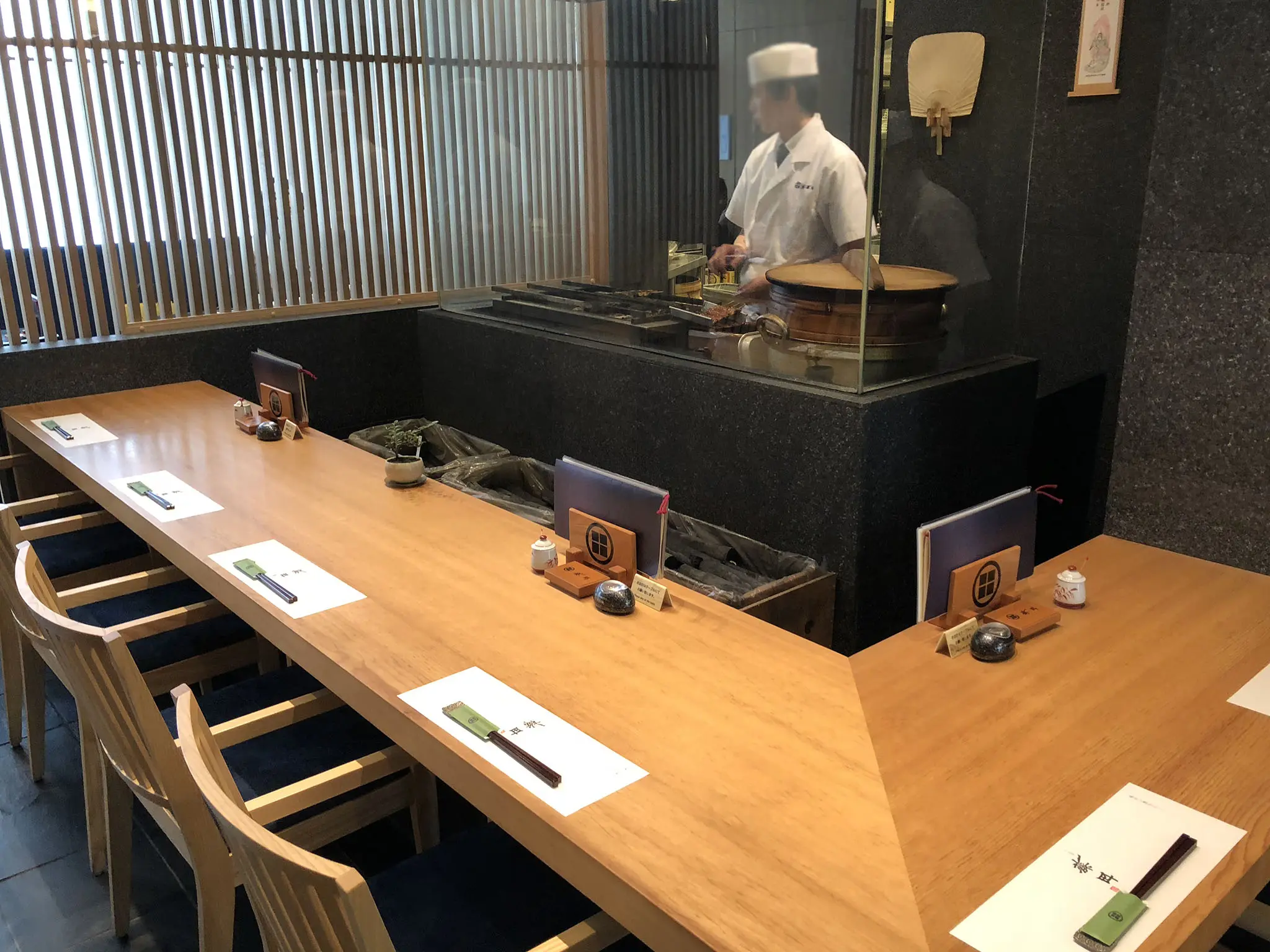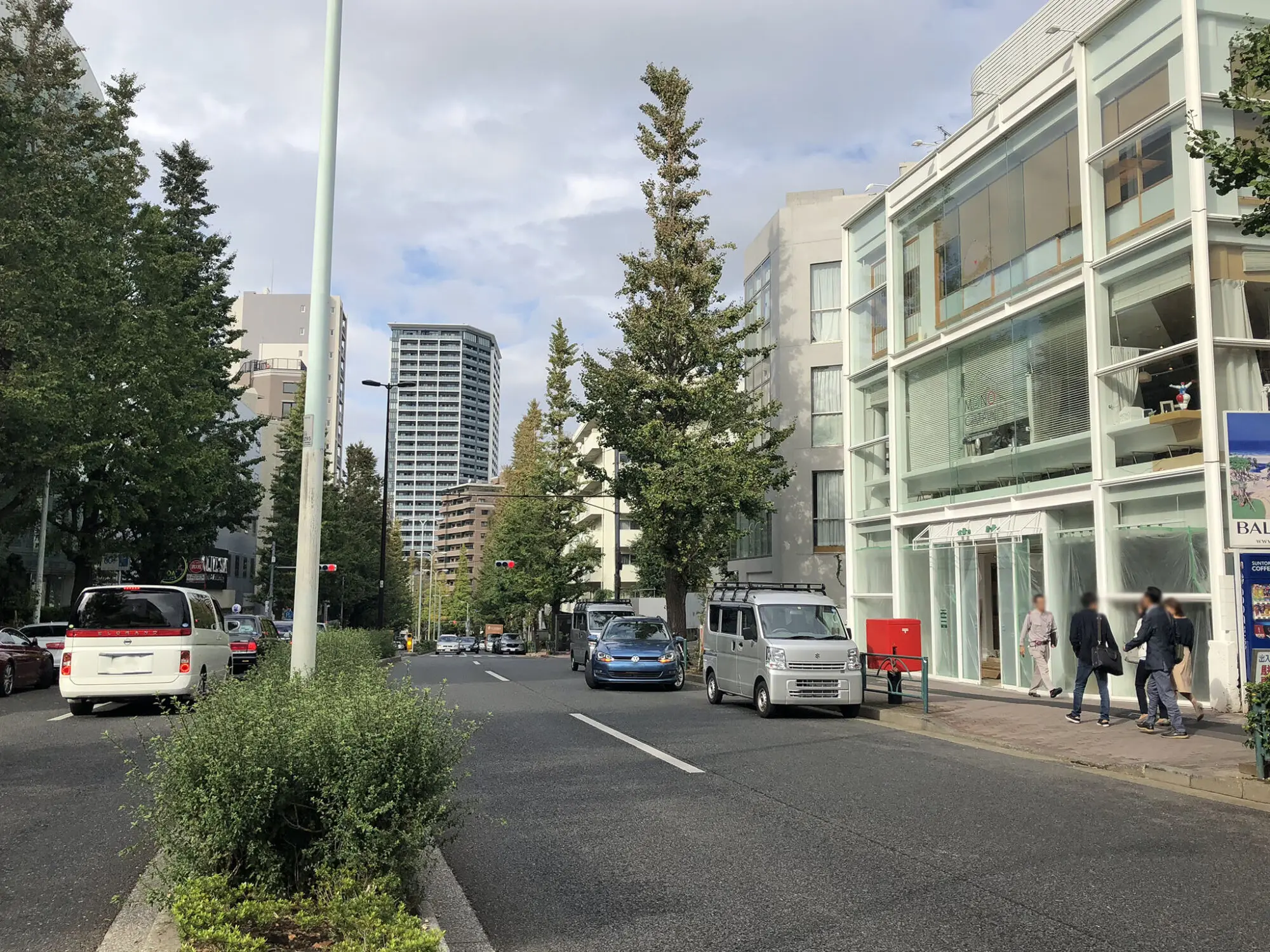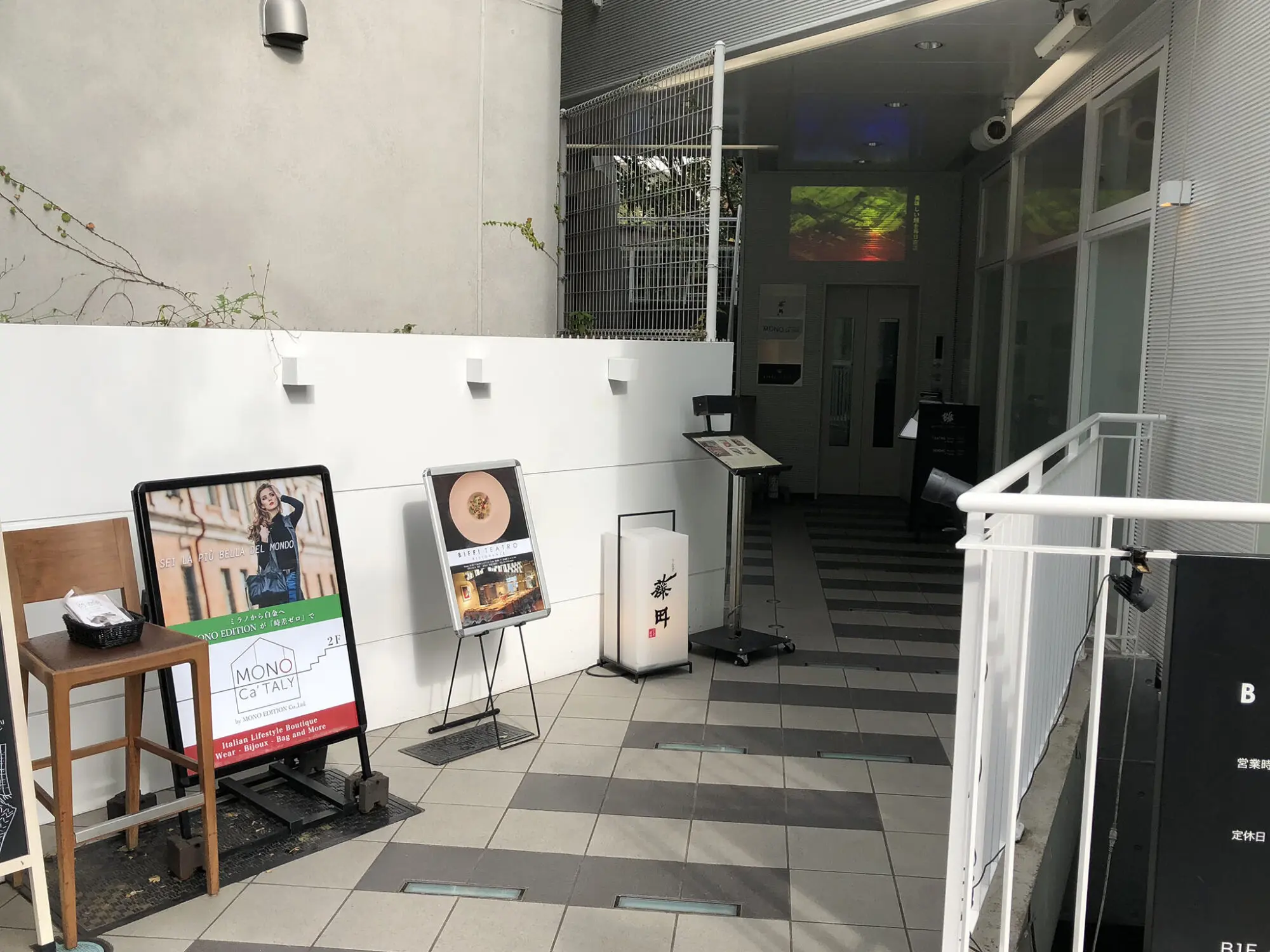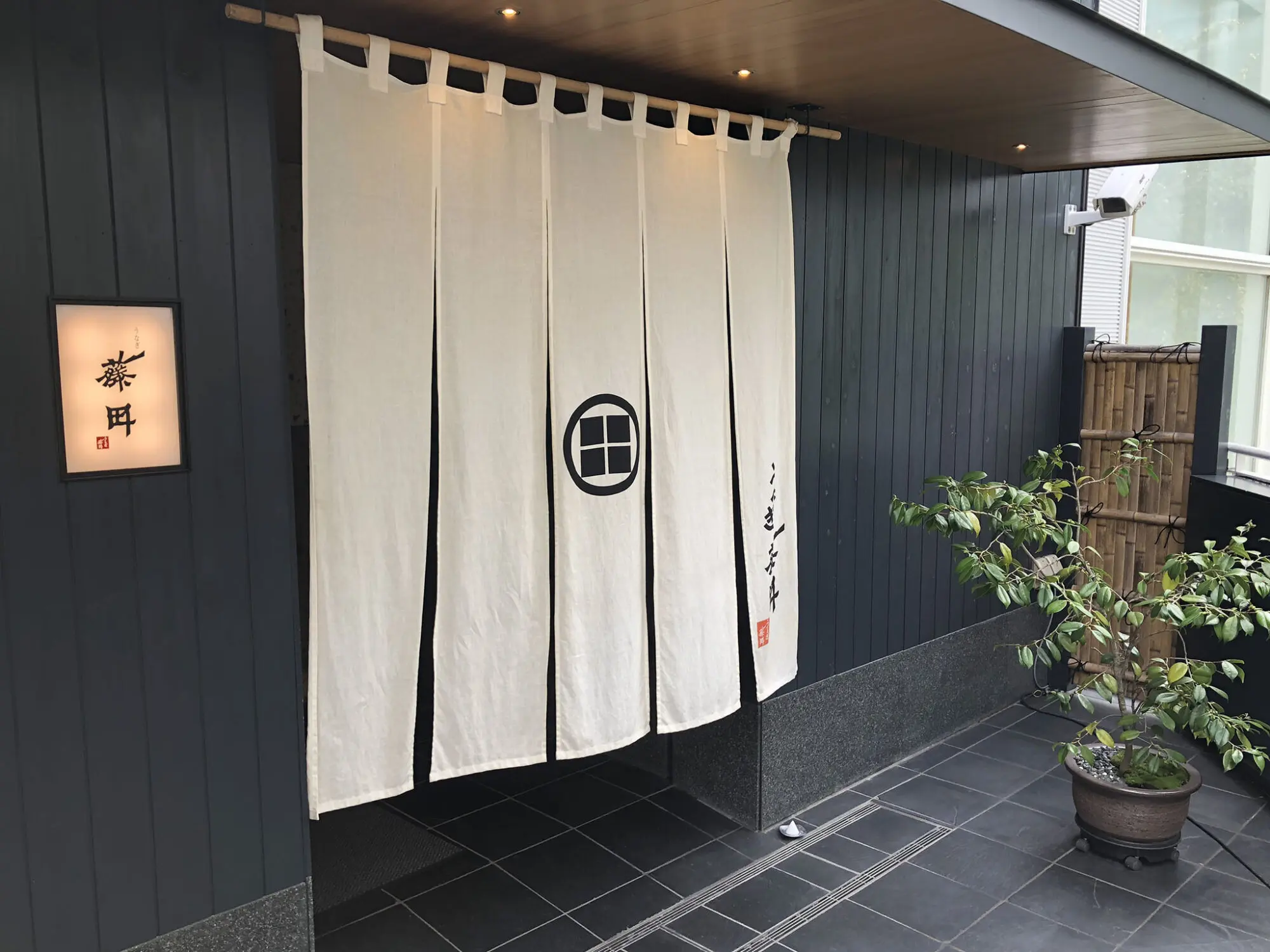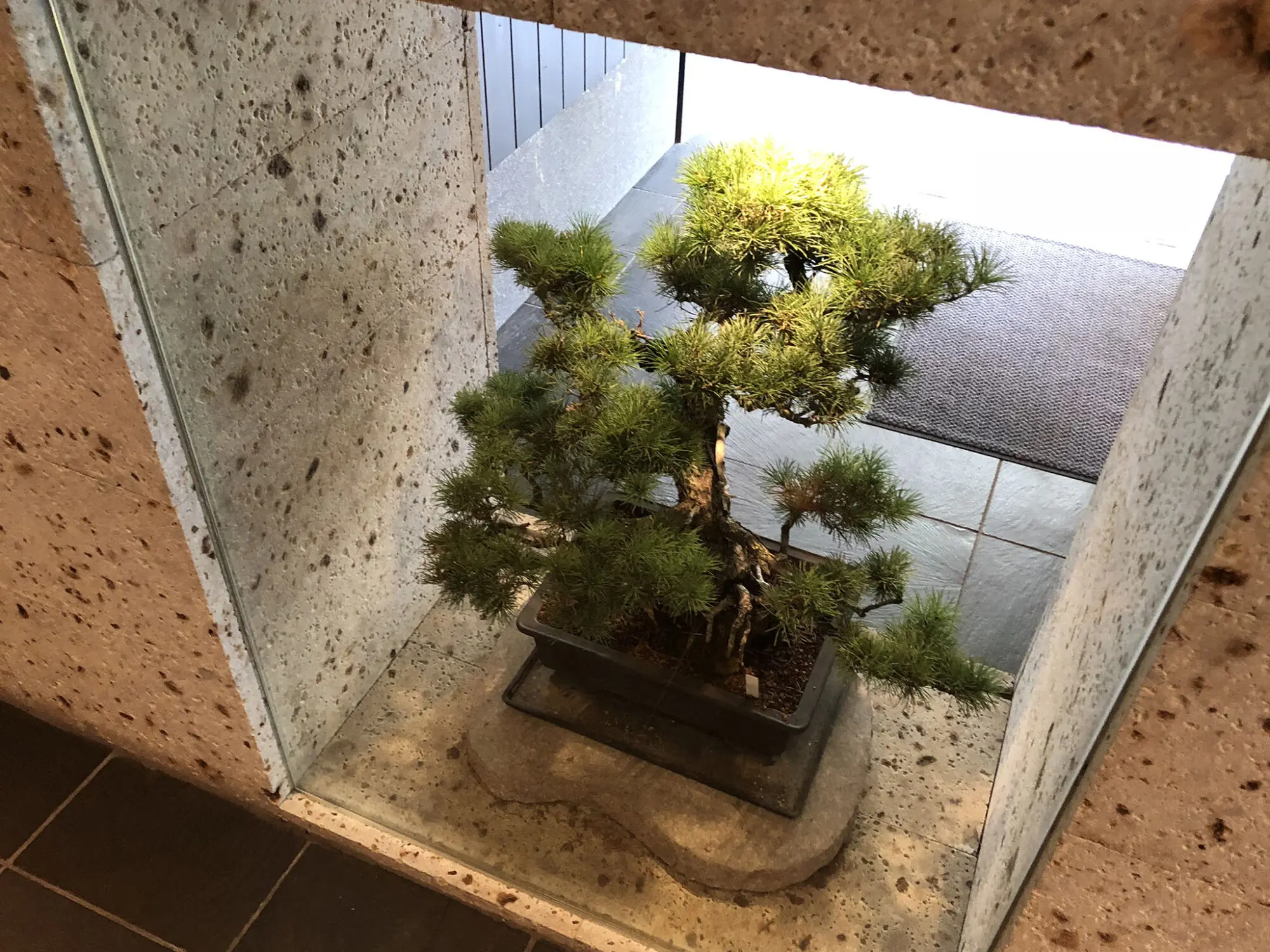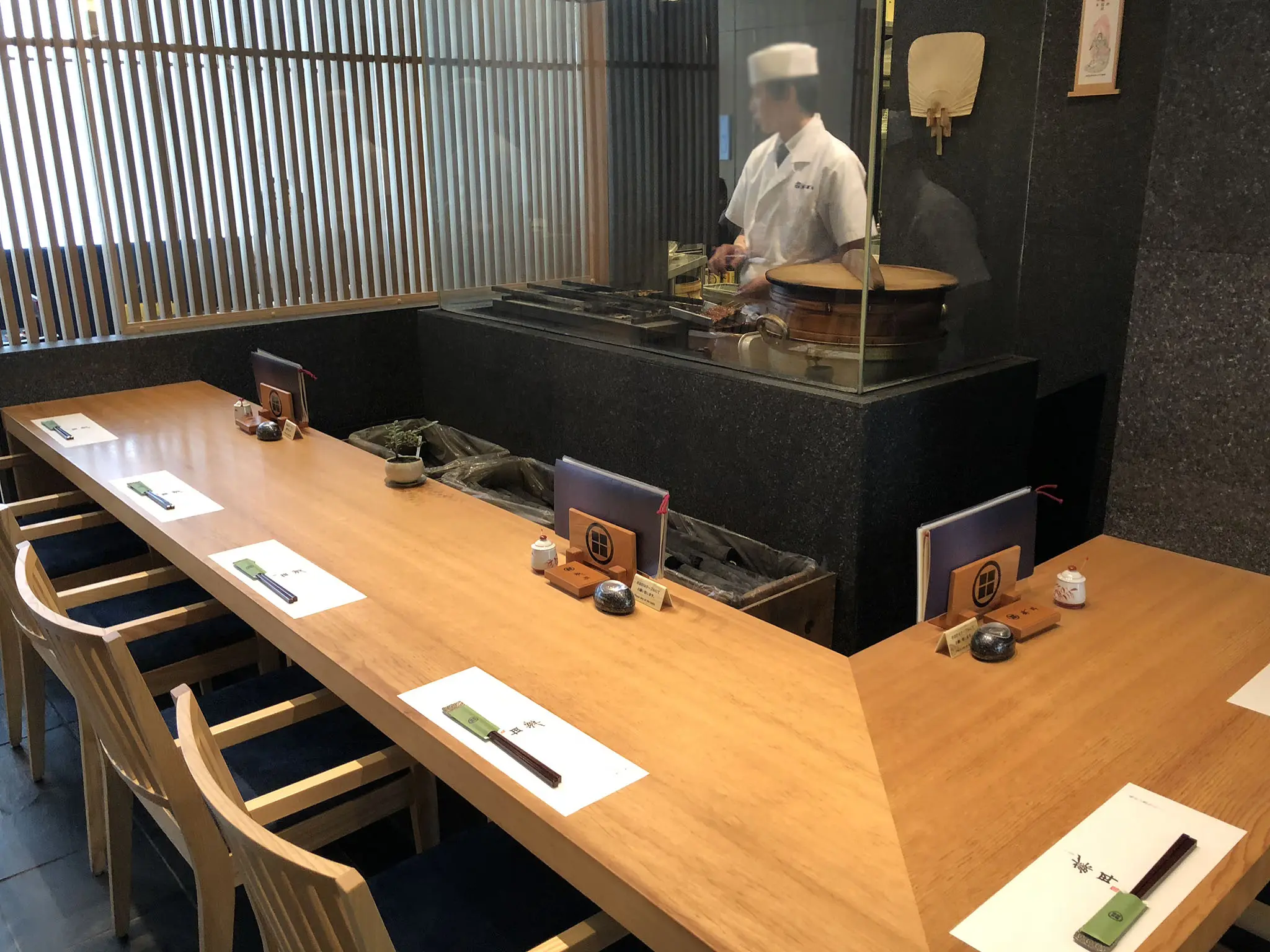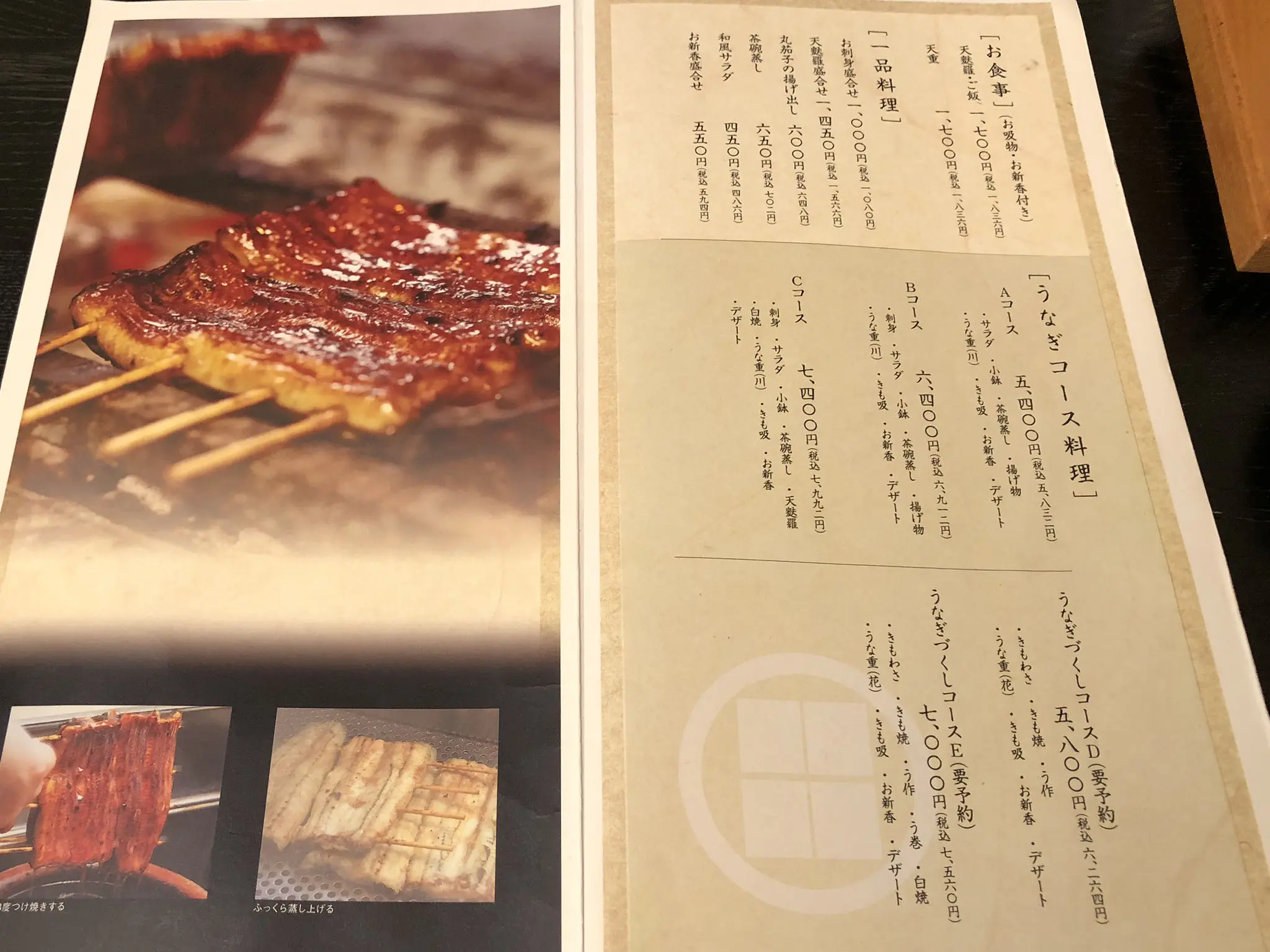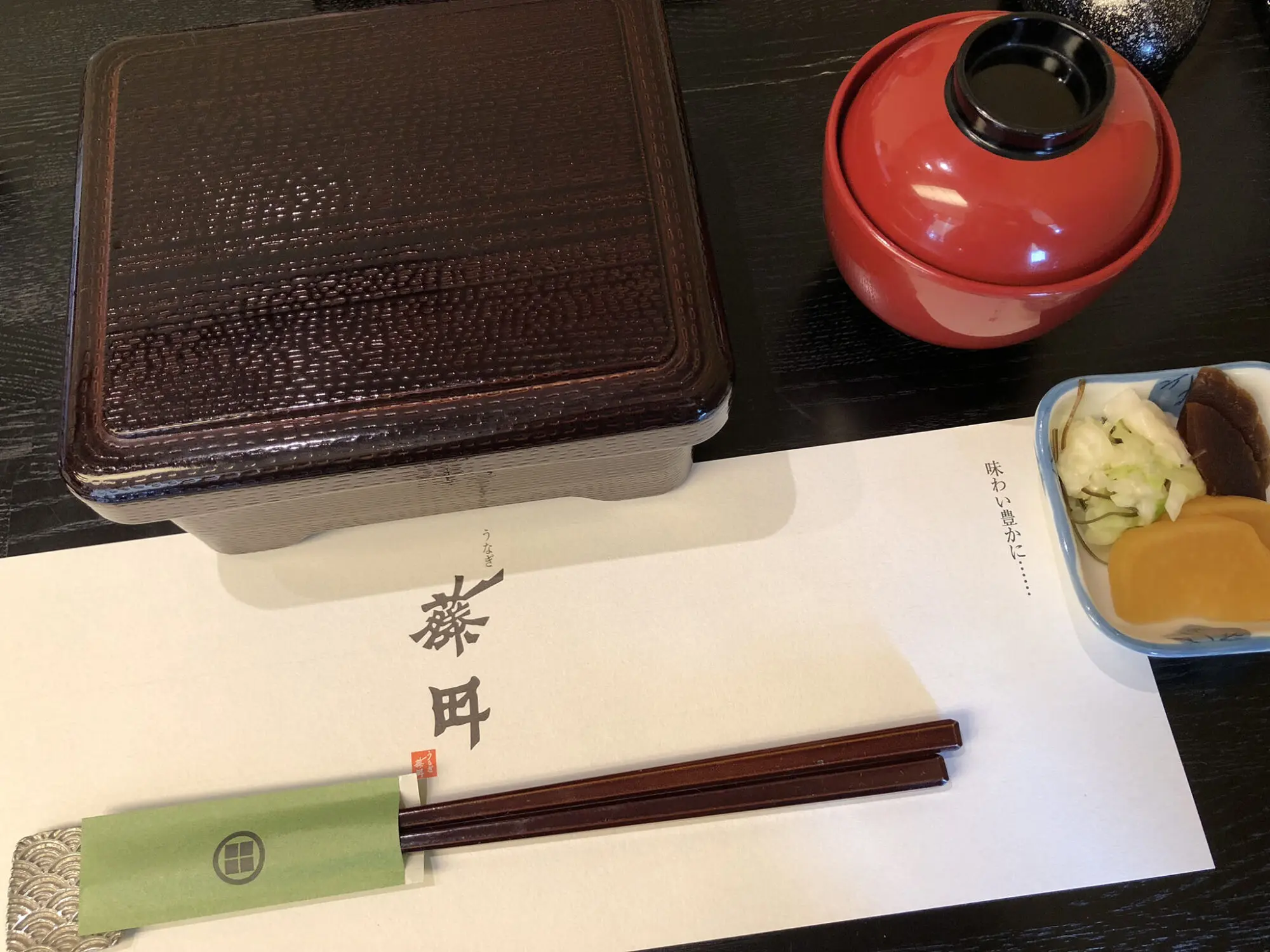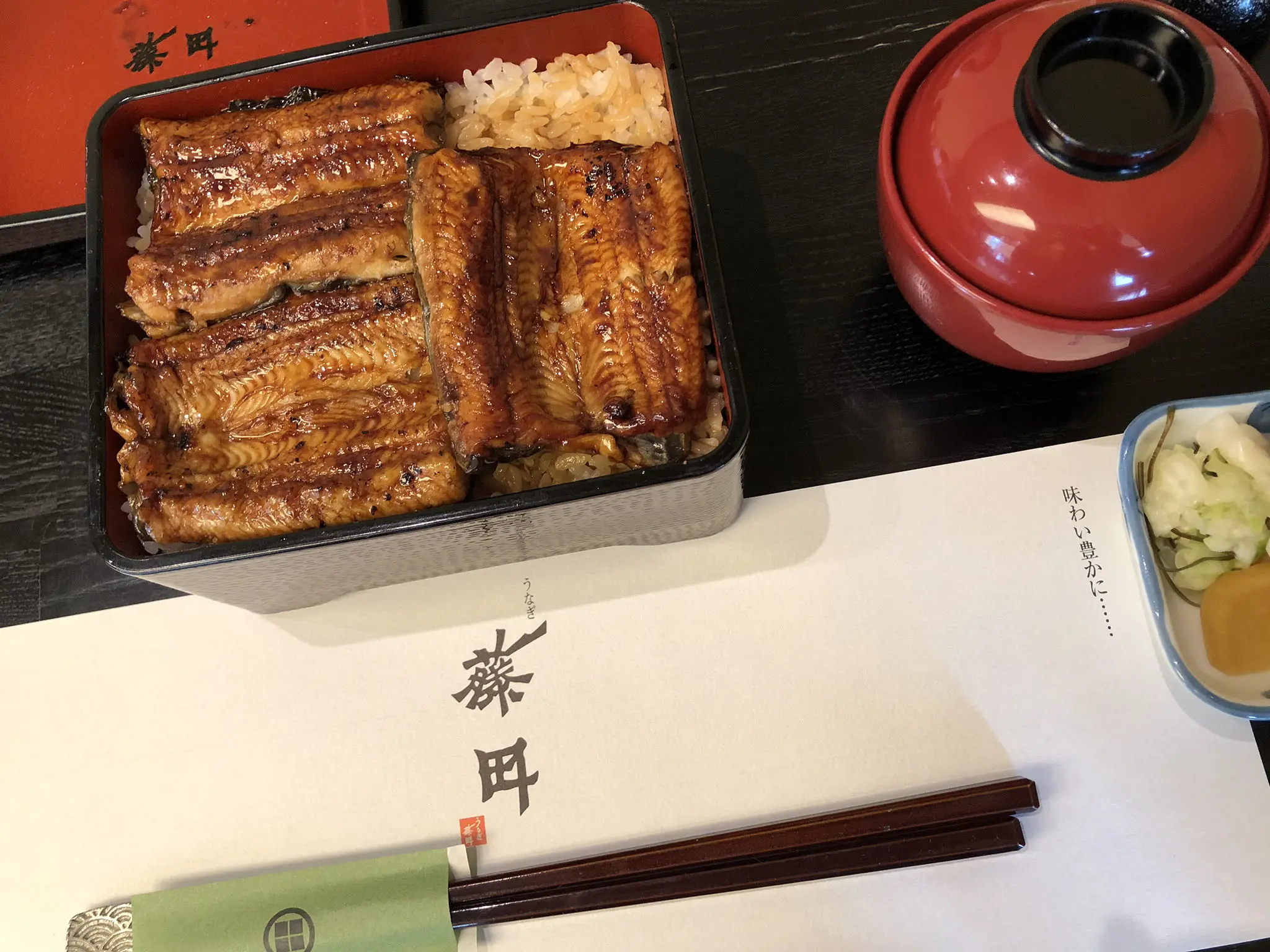“I’m sorry to all the adult readers who thought, “Another eel!
After all, the only way to become an adult is to eat eel.
I have a theory that eel is usually served with a thick, salty sauce in Nihonbashi, Kanda, and Suehirocho areas, but as you move toward Shibuya, Azabu, and Shirokane, the sauce becomes thinner, with little salt or soy sauce.
This time, I went to have lunch at Unagi Fujita, Shirokanedai.
“The restaurant was founded in 1872 and has been serving eel for four generations in Hamamatsu, Japan. You can expect a lot.
It is located along a nice street in Shirokanedai with a view of the Nature Education Park. It seems to be called Platinum Street, but it is nothing but Gaien Nishi Street. You can come here by cab from Ebisu or Meguro, and it is within walking distance from Shirokanedai metro station.
When I first arrived, I didn’t know where to look, but the restaurant is on the third floor of the building on the upper right of the photo. It has a modest and modern appearance, different from the image of eel.
There is a walkway on the side and proceed to the elevator.
Take the elevator to the third floor and you will find the restaurant.
At that time, the first floor was under construction and a new store was being built.
The building is modest, but the store is a traditional eel restaurant. It has a curtain and a double door.
The entrance is decorated with a magnificent bonsai tree.
The inside of the restaurant has a good atmosphere with a mixture of old-fashioned and modern architecture.
There is a large counter and tables on the right.
The counter is wide enough for you to eat comfortably. It’s right in front of the entrance, so there is a lot of traffic, but it looks comfortable when it’s open.
The table seating is quite small, and on weekends it becomes a family restaurant with lots of people, so it is best to make a reservation and get a private room if possible.
If you just want to eat for 20 minutes or so and go home, you may be able to sit at a table.
The main menu is as follows
Eel (river): 3,200 yen
Eel (flower): 3,800 yen
Eel (mountain) 4,400 yen
Eel (special mountain) 5,900 yen
Eel in a double layer: 6,500 yen
In addition to the above, there are also course meals and a la carte dishes that can be enjoyed with drinks.
The sauce is moderately sweet and has an elegant taste. The eel is grilled fragrantly with Binchotan charcoal and utilized, and the “opening technique is even more important. The Kanto style is to first grill it quickly and then steam it slowly, but the Hamamatsu style is to make it fragrant through the process of grilling while dipping it in the sauce, which is what makes it so appetizing.
As you can see in the description, the sauce is not too sweet and not too salty.
The aroma of the Binchotan is also very light, and while some restaurants may add a little too much aroma, this was not the case for me.
The photo shows the “mountain” version. You can choose from a small, medium, or large portion of rice, which is great.
However, the sauce for the rice is a little too little, so if you are used to eating at other restaurants, you may feel that it is not thick enough.
The size of the eel is normal, and the surface is a little hard, which is the Hamamatsu style. The surface of the eel is a little hard, which is the Hamamatsu style. It is not fluffy, but rather hard. There is not too much oil and it is light. The aroma of sansho (Japanese pepper) is also moderate.
The tsukemono (pickles) is Shizuoka style with takuan (pickled radish). Oshinko is neither sweet nor salty, and has a different taste from Shizuoka and Numazu. As a side note, there is a reason why there are two slices of takuan.
In the Edo period (1603-1868), when samurai were the center of the world, takuan was an indispensable staple in side dishes, and at that time, it was taboo to serve a samurai only one or three slices of takuan. At that time, it was taboo to serve only one or three slices of sawaan to a samurai, because it was said that one slice of sawaan meant “cutting off a person” and three slices meant “cutting off the body” (cutting off the stomach). This is where the custom of serving two slices of sawaan came from. However, there is a theory that this was a custom in the area where the samurai government was established, mainly in Edo. Pickled Eel
Everyone has their own taste for eel, but if you like it as simple as possible, with less oil and a lighter flavor, I can recommend it.
I prefer crispy, dark, oily natural eel with thick sauce, so I feel it is not enough to go with sake. Unlike Nihonbashi, the restaurant is open on Sundays, so it is convenient if you suddenly feel like eating on a Sunday. Please give it a try.
Eel Fujita, Shirokanedai Branch
IGAX Building 3F, 4-19-21 Shirokanedai, Minato-ku, Tokyo 108-0071, Japan
Phone: 03-6432-5636 Fax: 03-6432-5637
Business Hours] 11:30am – 2:00pm, 5:00pm – 9:00pm
Closed] Monday
http://www.unagifujita.net/
In the calm atmosphere of the restaurant, you can enjoy eel dishes using the secret sauce that has been added for over 50 years. Private rooms and large halls are also available.
